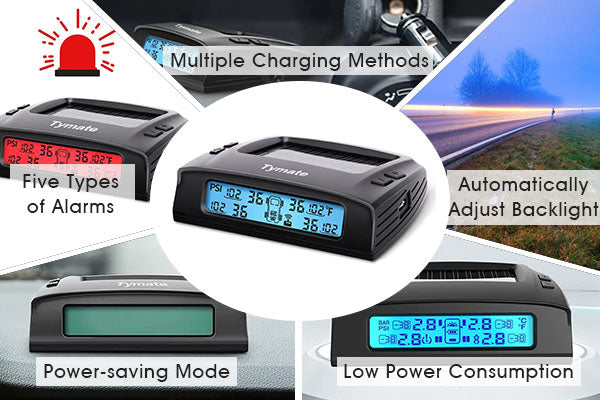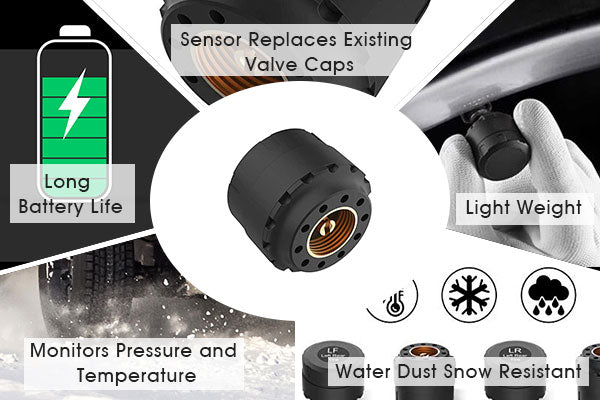
Owning a car comes with plenty of responsibilities. Maintenance is one of them. We are always aware of our batteries, tires, and even basics such as oil and water. Yet, did you ever think about how long your TPMS sensor can last? Awareness of this benefits your car's maintenance and safety while driving.
You need to change your tires after a certain amount of KM. This is an estimated 10,000 to 50,000km. TPMS sensors are similar since they are built to last 5-10 years. However, the limited battery lifespan is a sensor's most common failure. However, other factors may affect it. Making sure you verify the state of your sensors from time to time will provide a more significant lifespan.
Here is how you will be more aware of your TPMS.
What Is TPMS, And How It Works?
TPMS stands for tire pressure monitoring system. The TPMS consists of small electric sensors fitted to each vehicle wheel. The sensors monitor the tire pressure and feed this data back to the car. Should one or more tires see a change in air pressure, the system will show a yellow warning light on the dashboard or monitor to alert the driver.
Having explained the basics of TPMS, it is relevant to add that you will only encounter two types of TPMS. Direct and Indirect.
Direct
Direct Monitors are sensors that need to be installed into each wheel. They are ideal for every car, small or large. However, some vehicles do have a TPMS installed. Yet, you can install it into your RV wheels and control their pressure while driving to your family vacation spot.

When air pressure drops 25% below the manufacturer's recommended level, the sensor transmits that information to your car's computer system and triggers your dashboard indicator light.
Our Tymatetpms are all direct sensors.
Indirect
Many modern cars already have this type of monitor installed.
This TPMS monitor works with your car's Antilock Braking System's (ABS) wheel speed sensors. If a tire's pressure is low, it will roll at a different wheel speed than the other tires.
Friction between the tire and the road makes your car engine work harder. As a result, the TPMS sensor will alert you.
These monitors do not specify which tire is leaking air. A horse hook figure in a yellowish color will turn on your dashboard. You will have to check each of them thoroughly.
What's In The TPMS Box?
Once you get your first TPMS monitor, you will find yourself with different parts that are included in the box. You must also connect them to specific wheel parts for the sensor to work efficiently.
These parts are the valve stem, the valve core, the valve cap, the nut, the washer, and the seal. Ensure to keep all of them since they are essential for the monitor's efficiency.
The Valve Stem
If you look at any of your tires, you will observe a small cylindrical object popping out of your wheel edges. This object is the valve stem.
The primary function of this part is to allow you to inflate your tire. If it's not sealed correctly, it can leak air, resulting in an underinflated tire.
The key parts in the valve stem mechanism are the valve core, cap, and nut.
The Valve Core
Inside the valve stem, you will find the valve core.
The valve core is a small, spring-loaded component that controls your tire's airflow. Without this device, you will have a flat tire in seconds.
You will find different types of valve cores. There are thinner ones for road bikes, which you must lose to inflate your wheel.
However, the care valve core is similar to a small button. For air to get in, you need to push it down.
The Valve Cap
The valve cap was designed for cars that have TPMS installed in them. These valve caps form an airtight seal to prevent pressure loss.
The Nut
You have a total amount of 4 nuts when you purchase a TPMS monitor. Their function is to hold the tire pressure sensor to the rim. You can replace these nuts without taking the tire off the rim. If you can air your tire, you can replace your TPMS nuts.
The Washer
The TPMS washer is intended for use inside or outside the wheel. According to specific installation instructions, it is for one-time use only as it deforms to the rim contours.
The Seal
This part has the shape of an O-ring that forms an airtight seal between the sensor valve stem and the vehicle wheel. Provided as a part of the service kit for clamp-in sensors and is intended for one-time use only.
Of course, these components do not last forever, so proper maintenance and replacement are required to keep the entire TPMS system operating at peak efficiency.
Factors Affecting TPMS Sensor Lifespan
Three main factors can affect your TPMS lifespan. The first is the battery of your car, the second one is the environmental conditions, and lastly, corrosion.
Battery
Some TPMS sensors are designed to work together with your car's battery. On average, car batteries last about five years, depending on how often you drive your vehicle.
Other TPMS sensors come with an integrated lithium-ion battery, which cannot be replaced because of how the sensor is built up.
However, these batteries and/or sensors can last as long as ten years if not affected that much by environmental factors.
Environmental Factors
In the same way, temperature affects your tire pressure. It also has a result on the sensors. Due to drastic temperature changes or exposure, the battery can be affected.

More specifically, cold temperatures. It can even occur that the temperature makes the sensor constantly blink like a Christmas Tree. This can be frustrating for the driver and also stressful for the battery.
Corrosion
While just the presence of oxygen in the air, along with some moisture, is enough for steel to begin to rust, it is usually accelerated by some other environmental factor.
The most common type of corrosion we typically see affecting TPMS sensors is galvanic. This type of corrosion is generally not affected by your location, but because with just some moisture, it can start the corrosion process.
The process of galvanic corrosion can occur even in dry locations, such as Arizona. If you wash your car or go into some muddy road, it is enough for corrosion to make its way.
Signs of TPMS Sensor Failure
Tymatpms is one of the most precise sensors in the market because it gives you accurate tire pressure, monitors your car battery, a high-temperature warning, and more.
Yet, there are signs that you need to consider when the sensor is not working correctly.
Numerous Wrong Alerts
There is a high possibility that the sensor may alert you on several different occasions about the wrong tire pressure.
If you constantly get warnings that you have a damaged tire, you need to verify your sensors. If you have had yours for over 5 or 7 years, this could be a sign to invest in a new one.
Increased Fuel Consumption
If your tire goes flat while you're traveling and you don't realize it because of a defective TPMS sensor, it might cause your vehicle's fuel usage to increase.
If your sensor did not alert you about this, it is time to replace that sensor immediately.
Tire Change

If you recently changed your tires, your sensor can give you some false warnings. But this is because it still needs to be updated in the system.
Even though this doesn't affect your TPMS monitor, it can sometimes confuse you and make you consider that they are malfunctioning.
Putting Everything Together
The government implemented strong laws about TPMS for safety. Our job is to improve and maintain this vital device working effectively against the different factors that can affect its performance.
These factors are exposure to extreme temperatures, especially cold, corrosion, and occasionally your car's battery. As a responsible driver, you need to be aware of them. They are vital for your safety and the longer lifespan of your TPMS monitor.



